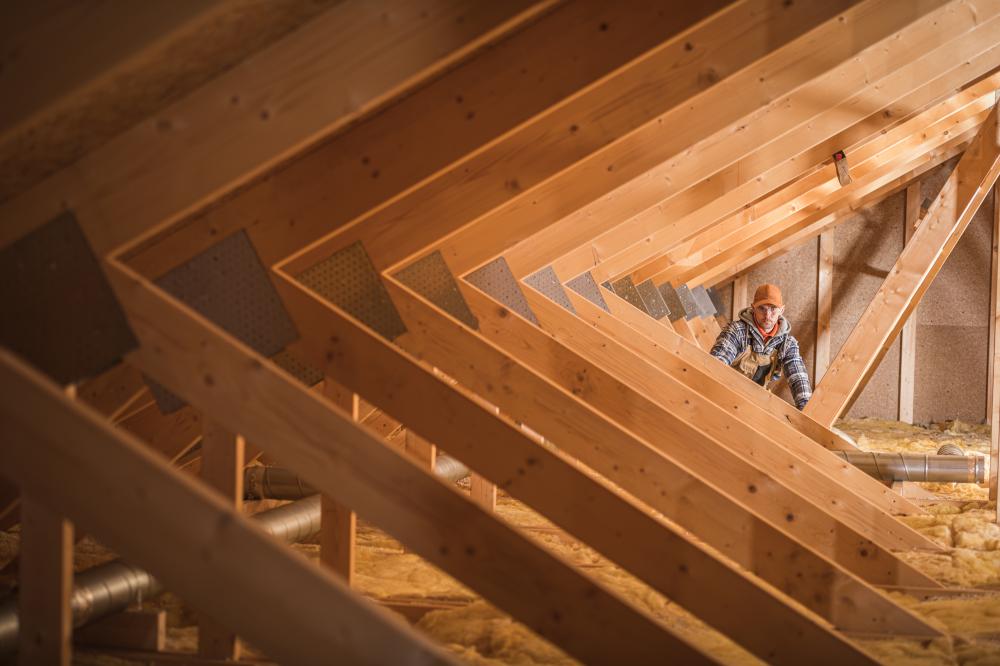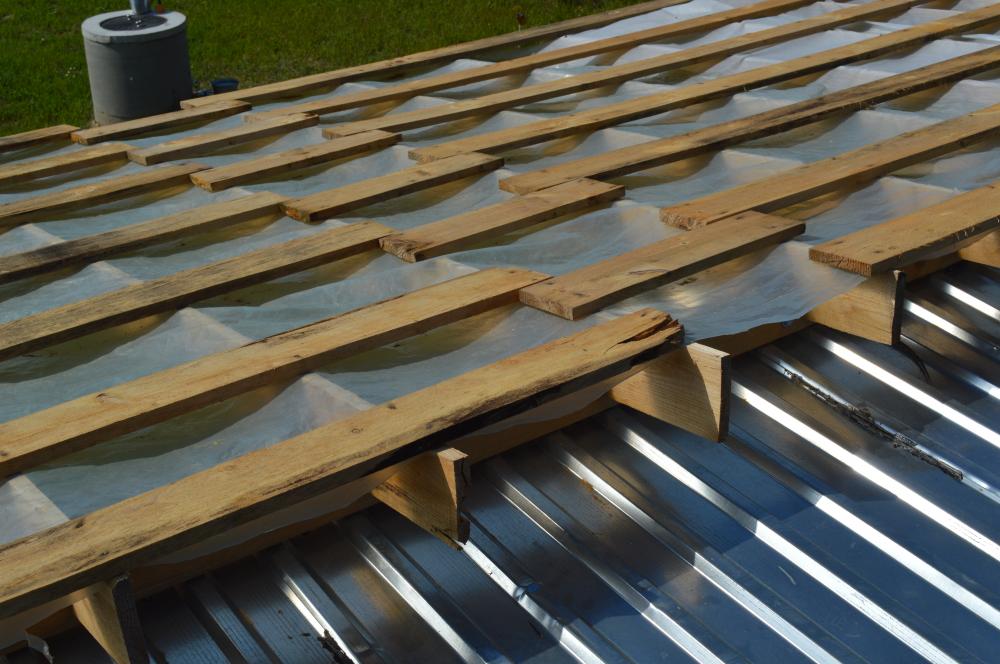
Understanding Radiant Barrier Insulation
In the realm of home insulation, radiant barrier attic insulation stands out as a unique solution for regulating indoor temperatures, especially in places with hot climates like Birmingham. As a specialist at Geo-Insulation of Alabama, I’ve encountered firsthand the challenges and triumphs of this insulation method. Let’s delve into the specifics of how this technology can be a game-changer for your home.
Radiant barriers primarily work by reflecting radiant heat rather than absorbing it. This is particularly beneficial in attics where most solar heat enters a home. By reducing the amount of heat that penetrates through the roof and into the living areas, a radiant barrier can contribute significantly to maintaining a cooler and more pleasant indoor environment.
Benefits in Birmingham’s Climate
The heat in Birmingham can be relentless during the summer months, making energy efficiency a priority for homeowners. As someone deeply familiar with Alabama’s climate, I can attest that radiant barrier attic insulation is particularly advantageous here. The reduction in cooling energy usage is not just a claim; it’s a reality many of our clients experience.
One illustrative case I recall involved a customer who saw a significant decrease in their air conditioning usage after we installed a radiant barrier. The installation reduced the temperature in their attic by as much as 30°F, allowing their home’s air conditioning system to operate more efficiently.
The Installation Process
Step-by-Step Guide
At Geo-Insulation of Alabama, we follow a meticulous process for installing radiant barrier attic insulation. One of our guiding principles is to tailor each project to the specific needs of our clients, which starts with a thorough assessment of the attic space.
- Initial Consultation: We begin by understanding the client’s specific requirements and evaluate their current insulation status.
- Material Selection: Choosing between foil, spray, or other types of radiant barriers based on effectiveness and client preference.
- Installation: Our trained technicians ensure a precise installation, whether stapling foil to the roof rafters or applying spray insulation over existing setups.
- Post-Installation Review: A quality check to confirm the installation meets our high standards, coupled with guidance on maintaining the insulation’s effectiveness over time.
Common Misconceptions
There are several misconceptions about radiant barriers that I often encounter during consultations. One common belief is that radiant barriers eliminate the need for other types of insulation. This is not the case. A radiant barrier is most effective when combined with proper thermal insulation, tackling both radiation and conduction.
Another myth is that radiant barriers are only useful in summer. In truth, they also aid in reducing heat loss during winter months, albeit to a lesser extent than traditional insulations. It’s crucial for clients to understand that radiant barrier attic insulation is a complementary solution. It works best in tandem with other methods, not as a standalone fix.
Personal Testimonies and Experiences
Our team at Geo-Insulation of Alabama takes great pride in our customer service and the relationships we build. There was a recent project where a family in Birmingham expressed personal satisfaction not only with the drop in their energy bills but also with the overall comfort of their home. Hearing from homeowners how our work has positively impacted their day-to-day life is incredibly fulfilling.
I recall one client comparing their enhanced comfort to adding new windows to a room. With less heat penetrating their attic, they found their home’s living areas more bearable, even during peak heat hours.
These personal experiences reinforce my confidence in recommending radiant barrier attic insulation for Birmingham homeowners looking to make efficient home improvements.
Cost Considerations
Like any home improvement project, understanding the cost implications of radiant barrier attic insulation is crucial. At Geo-Insulation of Alabama, we believe in transparency, providing clients with clear pricing based on square footage and material choice.
The cost can vary significantly depending on the type and quality of the insulation materials. Foil barriers are often less expensive, while spray applications can cost more. Despite the initial cost, the long-term savings on energy bills often justify the investment, a point we make sure to emphasize during our consultations.
Choosing the Right Insulation
Factors to Consider
It can be daunting to choose between different insulation options. We advise our clients at Geo-Insulation of Alabama to consider several factors such as climate, current insulation levels, and specific energy efficiency goals. Radiant barrier attic insulation is a versatile option, but it’s important to align your choice with your home’s specific needs.
For instance, homes with HVAC systems located in the attic might benefit more significantly from radiant barrier insulation due to the reduction in attic temperatures, which in turn decreases the strain on the HVAC system. This nuanced understanding is why a personalized consultation is vital.
Environmental Impact
An often-overlooked aspect of radiant barrier attic insulation is its environmental benefits. By reducing the energy demand for cooling, this insulation method contributes to a smaller carbon footprint. As a company, Geo-Insulation of Alabama is committed to promoting sustainable practices, and radiant barriers play a part in that mission.
Lower energy consumption means fewer emissions from power plants, benefiting the environment on a larger scale. Clients can enjoy not only cost savings but also the satisfaction of contributing to environmental conservation.
Long-term Maintenance
Once installed, radiant barrier attic insulation requires minimal maintenance, which is another reason our clients appreciate this solution. At Geo-Insulation of Alabama, we provide guidance on how to ensure it continues to function effectively over time. Regular inspections of the attic space to prevent dust buildup are typically sufficient.
Occasional checks can verify that the barrier remains intact and continues to reflect heat as intended. Any significant accumulations of dust or dirt can be gently cleaned to maintain reflectivity, ensuring continued performance and energy savings.
Evaluating Energy Savings
Monitoring energy savings post-installation is a practical approach to evaluating the effectiveness of radiant barrier attic insulation. Many clients of Geo-Insulation of Alabama report noticeable reductions in their utility bills, often seeing a decrease of 5% to 10% or more in cooling costs.
We encourage homeowners to compare their energy bills before and after installation, taking note of any seasonal fluctuations to get a true sense of the savings. Measuring energy efficiency this way reinforces the value of the investment and highlights the benefits of enhanced home insulation.
The Importance of Professional Installation
Why Choose a Pro
While some homeowners might consider DIY installations, the complexity and precision required make professional installation highly recommended. Geo-Insulation of Alabama’s experienced team ensures that radiant barriers are correctly installed, optimizing performance and adhering to safety protocols.
Incorrect installation of radiant barrier attic insulation Birmingham products can lead to reduced effectiveness or even damage to the home’s structure. By relying on experts, homeowners can rest easy knowing their installation is handled with the utmost care and precision, delivering the intended energy savings and comfort improvements.

How much does it cost to install a radiant barrier in an attic?
The cost of installing a radiant barrier in your attic can vary significantly depending on several factors such as the size of your attic, the type of material you choose, and labor costs. At Geo-Insulation of Alabama, we pride ourselves on offering transparent pricing. Generally, you might expect to pay anywhere from $0.10 to $1.00 per square foot for just the material, with professional installation adding to the cost. However, the initial investment can often be offset by the savings on your energy bills. We’ve had clients report that they recouped the cost within a few years through reduced cooling expenses. It’s always a good idea to get a personalized quote to understand the specific costs for your situation.
Is a radiant barrier in an attic worth it?
Absolutely, especially in a hot climate like Birmingham’s. By reflecting radiant heat, radiant barriers help keep your attic–and by extension, your home–cooler. Many of our clients at Geo-Insulation of Alabama have seen a significant reduction in their energy bills and improved comfort levels in their homes. It’s like having an extra layer of defense against the sweltering summer heat. Additionally, a radiant barrier can extend your air conditioning system’s lifespan by reducing the workload. Are you curious about how much you could potentially save with a radiant barrier? We’d be happy to discuss this with you!
What are the disadvantages of radiant barriers?
While radiant barriers offer many benefits, there are some drawbacks to consider. They don’t prevent heat transfer through conduction or convection. This means they work best when paired with other insulation types. Another consideration is dust buildup. If the barrier gets covered, its effectiveness can decrease, which is why we recommend periodic checks. Some homeowners might also experience a higher upfront cost compared to other types of insulation. At Geo-Insulation of Alabama, we offer guidance on how to maintain your radiant barrier’s efficiency over time to ensure you maximize your investment.
Is radiant barrier better than insulation?
This is a common question and the answer is: it depends on your needs. Radiant barriers and traditional insulation serve different purposes. While insulation primarily reduces heat flow through conduction, radiant barriers reflect radiant heat. Ideally, a combination of both offers the best results. In Birmingham, where we experience high temperatures, pairing a radiant barrier with traditional insulation like fiberglass can significantly enhance energy efficiency. Our team at Geo-Insulation of Alabama is always ready to tailor a solution that meets your home’s specific requirements. Have you considered the benefits of combining these two types of insulation?
What is the environmental impact of using a radiant barrier?
Using radiant barrier attic insulation can have a positive environmental impact. By reducing the demand for air conditioning, less energy is consumed, which in turn reduces the carbon footprint associated with electricity production. At Geo-Insulation of Alabama, we are committed to promoting sustainable practices, and we find that many of our clients appreciate contributing to environmental conservation. Lower energy usage not only saves money but also helps in reducing greenhouse gas emissions. Interested in learning more about how your insulation choices can affect the environment?
Why is professional installation of a radiant barrier important?
While it might seem tempting to tackle installation as a DIY project, professional installation ensures optimal performance and safety. Incorrect installation can reduce effectiveness and potentially lead to structural damage. Our team at Geo-Insulation of Alabama has the expertise to ensure radiant barriers are installed correctly and safely. We guarantee that your system will achieve the intended energy savings and comfort improvements. When was the last time you had a professional assess your insulation needs?
Resources
- Radiant Barriers – U.S. Department of Energy – Information about radiant barriers and their benefits from a reliable government source.
- U.S. Environmental Protection Agency – Learn more about environmental impacts and energy-saving strategies for homes.
- Insulation – U.S. Department of Energy – Explore different insulation options and their impact on energy efficiency.
- Federal Trade Commission (FTC) – Consumer information on making informed decisions about home improvements.
- National Renewable Energy Laboratory (NREL) – Research and resources on renewable energy and energy efficiency.

